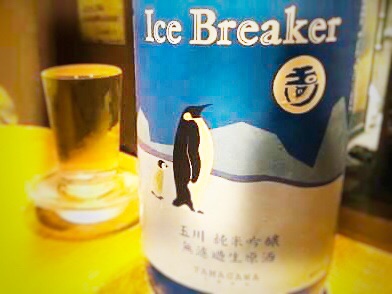
Natsu-zake: Beat the Heat with Sublime Summer Sake
The rainy season has come and gone, and the dog days of the Japanese summer are in full swing. To cool off on a sweltering summer’s day, your first inclination might be to reach for an ice-cold beer—but wait! Sake—Japan’s national beverage—is also a perfect drink for any season, and summer is certainly no exception. In today’s article, John Townsend—winner of the 2018 Mr SAKE Japan competition and a card-carrying sake aficionado—returns to show you all the ways in which a cup of sake can be the perfect way to refresh yourself during this sweltering season.
All About Natsu-zake (夏酒): A Summer Sake Primer
The catch-all term “natsu-zake” (natsu meaning summer, -zake being “sake” with a sound change) is used in Japanese to describe sake brewed to be enjoyed in the summer. Unlike other sake lingo you might be familiar with—such as “ginjo” or “daiginjo”, which refer specifically to how much the rice is polished—there are no strict rules as to what qualifies as natsu-zake. In other words, any sake brew can be labeled, branded and sold as natsu-zake if the brewery decides that it’s especially suited for the season.
This might sound confusing at first, but it’s actually a wonderful thing! Many fans agree that one of the most impressive things about sake is the almost limitless varieties and flavor profiles that are available—and that goes for natsu-zake as well. From crisp, refreshing offerings to sparkling sake and brews that pack a punch, you’re sure to find something to please your palate.
In Search of the Perfect Summer Sake
Visit any sake bar or bottle shop during this season and, more likely than not, natsu-zake will quickly catch your eye. You’ll typically—if not always—find it housed in clear blue bottles, often with striking labels designed with refreshing hues and summer-themed imagery such as fireworks. The variety can be intimidating, but there’s no need to fear! If you’re new to sake and unsure what to drink, there’s no shame in choosing your order based on a particularly attractive label, or asking the proprietor what they recommend. Always remember that although the world of sake is deep, it doesn’t need to be difficult!
The Many Faces of Natsu-zake
So, what can you expect from a glass of natsu-zake in terms of aroma and flavor? The short answer is: it completely depends on that particular brewer’s vision of a refreshing summer beverage, but as a general guideline, you’ll often find summer sake to be light (or dry) and “fresh” (unpasteurized or nama-zake is popular), and in some cases even lower in alcohol content so it can be sipped all day at a BBQ or campsite. Sparkling (kassei) sake—whose bubbles come not from the infusion of carbonated gas, but emerge naturally from the fermentation process—is another popular offering, as are lightly cloudy (usu-nigori) brews. That said, there are some fascinating exceptions as well, including genshu (undiluted) sake designed to be served on the rocks, sweet-tart sake reminiscent of fresh fruit, and much, much more!
A Closer Look: Three Brews for Summer
As mentioned at the start, there is a virtually limitless assortment of sublime summer sake produced by breweries all across Japan. Here, we’ll take a closer look at just three of these brews to give you a window into the world of natsu-zake, but remember—you really can’t go wrong with any of them!
Taka Junmai Hon-nama Sparkling “Summer Knows”
Nagayamahonke Shuzojo Co, Ltd. (Ube, Yamaguchi Prefecture)
Inspired by pétillant, a genre of effervescent French wine, this is a delightfully spritzy sake that’s light and refreshing while still offering the rich rice tones for which Taka is known. The brewer recommends serving it well-chilled and paired with stir-fries of summer vegetables like Japanese bitter melon (goya)
Tamagawa Ice Breaker
The Kinoshita Brewery (Kyotango, Kyoto Prefecture)
Easily recognized by the charming label with a penguin parent and child, this is Tamagawa’s truly unique take on summer sake: a “3U” (undiluted, unpasteurized, unfiltered) brew meant to be served on the rocks. Savor the way the flavor evolves as the ice melts, chilling the sake and diluting the alcohol level.
Kakuemon Junmai Ginjo Shirokuma (Polar Bear) Label
Kimura Brewery (Yuzawa, Akita Prefecture)
Calling to mind diamond dust in its transparent bottle adorned with a swimming polar bear, this lightly cloudy sake is the result of the brewer blending arabashiri (first tap) and seme (final press) sake to achieve the perfect balance—the punchy freshness of the former and the depth of the latter.
Unlimited Possibilities
Though the state of affairs in the world today means that many will opt to enjoy sake in the comfort and safety of their homes, under normal circumstances, natsu-zake can be a wonderful companion to almost any summer situation: from a day at the beach to a BBQ, camping excursion, or an evening of fireworks. And because sake truly shines alongside food, you’ll definitely want to try it together with seasonal delicacies such as summer vegetables, grilled eel, and even watermelon! Don’t be afraid to experiment—you’re sure to find a pairing that strikes your fancy.
Worked up a thirst? Why not head to your local sake bar or bottle shop—or online store—and try out some natsu-zake for yourself? We’re sure you’ll find that there’s no better way to beat the heat of the Japanese summer.
Next month, “Mister Sake" will return to take another deep dive into the world of sake, so stay tuned! In the meantime, take care, and kanpai! (“Cheers!”)




